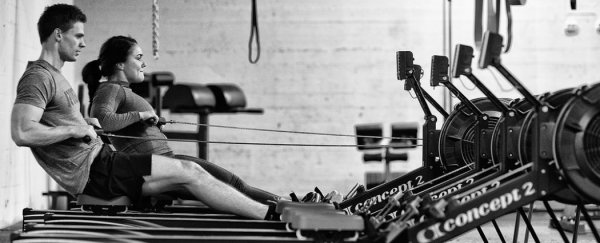Let's face it, regular exercise is hard. Most people never become gym junkies, nor do they become obsessed with running marathons. And even those who do could end up forgoing exercise at some point of their lives - when circumstances change, if they get injured, or perhaps they simply move on to become as lazy as the rest of us.
It's not uncommon to see athletes quickly go out of shape once they have retired from professional sports. The effect is known as 'detraining', and it can cause a slew of physiological changes in a person's body.
There's a range of measurements for determining a person's fitness levels. Some of these are more subjective, like how many push-ups you can do in a minute, or how long you can hold a plank, and specific tests can quantify things such as your muscle strength and endurance.
But there are more objective measurements as well - for example, maximal oxygen uptake (or VO2 max) measures the maximum volume of oxygen your body can consume for cellular respiration, which in turn generates adenosine triphosphate (ATP) - the molecule that carries energy for all our biological needs. In simple terms, VO2 max rather accurately reflects your aerobic power and cardiovascular fitness overall.
When you suddenly stop your normal exercise routines, just as suddenly the body stops doing a whole lot of beneficial things. As cardiovascular physiologist Andreas Bergdahl explains to George Dvorsky at io9, regular endurance training - such as running - increases the heart's ability to pump blood around the body, our blood vessels' ability to transport it, and the amount of capillaries we have. It also increases the size and number of our mitochondria - the 'power plants' of cells. All of this leads to more efficient use of nutrients and oxygen in the body.
Among other profound benefits is muscle strength, coordination, flexibility, and core mobility.
When we stop engaging our bodies in physical activities, it causes all these measures of fitness to decline - a process known as deconditioning or detraining. And the fitter you are, the faster you tend to lose the benefits of exercise, even if your baseline fitness remains better than average. The first to go is VO2 max, and before you know it, muscle strength, stamina, and coordination follow. You can also expect a rise in blood sugar levels, and even blood pressure.
"There are studies indicating a decline of 7 to 10 percent of VO2 after 12 days of sudden inactivity, 14 to 15 percent after 50 days, and 16 to 18 percent after 80 days," Bergdahl explains. "Maximal values for cardiac output, stroke volume [the amount of blood pumped out of the heart during each contraction] and ability of mitochondria to extract oxygen each decline along the same lines while the heart rate increases."
You can also expect to gain weight. As exercise physiologist Harry Pino tells io9, muscle cells don't actually convert into fat, which is a common myth. "What really happens is that the muscle cells - which are completely different than fat cells - become smaller, because now you don't have a demand of power and strength - they're not growing," he says. Meanwhile, the fat cells grow larger, which causes a change in one's appearance.
Experts agree that athletes should strive to do at least some activity even when they are on downtime to retain the effect of all their hard work.
But if detraining is so bad for you, are you better off not starting exercise in the first place? Absolutely not. A sedentary lifestyle is far more detrimental than even infrequent exercise, but if you really want to reap the health benefits of putting your body through sweaty, positively stressing activities, it's best to do that regularly, and ideally for a total of 300 minutes a week.
